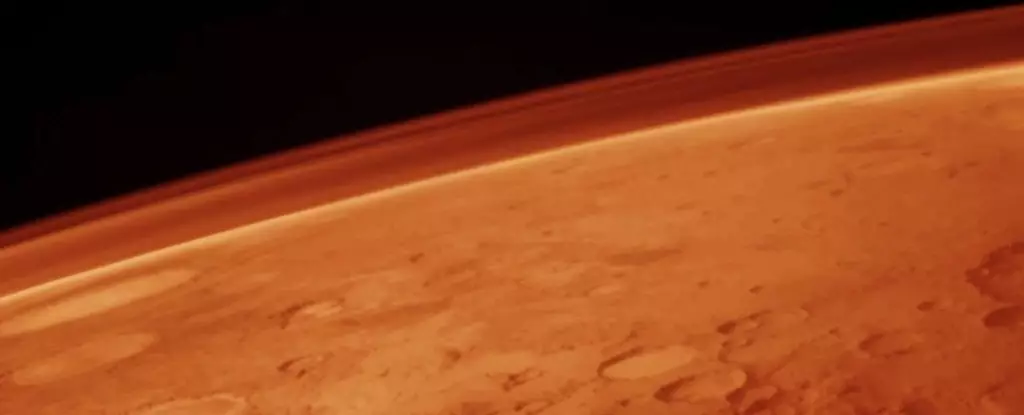For generations, the dream of making Mars hospitable has inspired countless scientists, writers, and dreamers. The vision of transforming the barren Red Planet into an Earth-like paradise captivates the imagination, leading to vibrant depictions like Kim Stanley Robinson’s Mars Trilogy. However, dreaming is one thing; actualizing such ambitions leads us into a quagmire of practical necessities and astronomical challenges. The idea of terraforming Mars becomes increasingly daunting when we confront the staggering amount of resources and energy required to make our cosmic neighbor livable for humankind.
Understanding the Nature of Mars’ Atmosphere
Recent findings presented by Dr. Leszek Czechowski at the 56th Lunar and Planetary Science Conference underscore the harsh realities entwined with Mars’ atmospheric conditions. His paper entitled “Energy Problems of Terraforming Mars” elucidates the severe limitations imposed by the planet’s thin atmosphere. Currently, the atmospheric pressure on Mars is about 1/100th that of Earth, leading to a critical problem—unprotected human bodies would experience boiling fluids at such low pressure. This glaring fact alone presents an immediate physical barrier to colonization, requiring individuals to constantly wear pressure suits if they hope to survive on the Martian surface.
Dr. Czechowski extrapolates that to raise the atmospheric pressure on Mars to an Earth-like state, an unfathomable volume of gases would need to be imported from outer layers of the Solar System. This astronomical quantity of resources brings a new question to the fore: how do we supply these needs?
Potential Resources: The Kuiper Belt and Beyond
As evidenced by Dr. Czechowski’s research, the journey to attaining a livable atmosphere on Mars leads scientists to the icy realms of the Kuiper Belt. While asteroids within the inner asteroid belt might initially appear suitable due to their relative proximity to Mars, they lack the water and nitrogen essential for constructing a breathable atmosphere. In contrast, the objects nestled in the Kuiper Belt are rich in the necessary materials, making them prime candidates for terraforming efforts.
Yet, the notion of hauling material from the Kuiper Belt is laden with its own set of challenges. Dr. Czechowski calculates that delivering a sufficiently sized object from the Oort Cloud to Mars would take approximately 15,000 years—an unacceptably long timeframe for any endeavor aimed at creating an Earth-like environment. Furthermore, relying on impacts to release atmospheric materials presents additional risks; the erratic behavior of these icy bodies as they approach the Sun could lead to their disintegration, resulting in wasted resources and energy.
Engineering Solutions and Technological Barriers
Interestingly, Dr. Czechowski arrives at a rather simplistic conclusion—while the theoretical groundwork for a habitable Mars exists, the practical methodologies for achieving this goal remain nebulous. Designing a propulsion system that can deliver large icy bodies from the Kuiper Belt without succumbing to gravitational disintegration is an enormous engineering feat. A potential solution hinted at in his research involves utilizing fusion reactors to power ion engines, though specifics on this revolutionary technology are sorely lacking.
This gap in technological feasibility raises more questions than it answers. What other pathways exist for terraforming Mars without leaning entirely on massive asteroid impacts? Could bioengineering offer alternative solutions, albeit accompanied by their own enormous energy demands? The road ahead seems riddled with hurdles both imaginative and practical, even for the most optimistic Mars enthusiasts.
The Unyielding Dream of Cosmic Colonization
Despite the overwhelming challenges highlighted by Czechowski’s work, the dream of terraforming Mars remains deeply embedded in human aspiration. Our species has always sought to probe the unknown, to seek out new frontiers in the cosmos. Mars, as our nearest planet, bears the weight of these yearnings, inspiring countless imaginations to envision a future where its desolate landscape teems with life.
It’s critical to recognize that while we continually contemplate these exciting possibilities, the realities of what it would truly entail to make Mars habitable seem dauntingly distant. The intersection of our dreams with practical engineering and energy challenges holds profound implications for our understanding of cosmic colonization. Nevertheless, the allure of a terraformed Mars will likely continue to ignite imaginations and spur scientific endeavors, urging humanity to chase the seemingly impossible. Each small advance in technology nudges us closer to unveiling the secrets of our celestial neighbor, regardless of how far-fetched the dream may appear at times.

